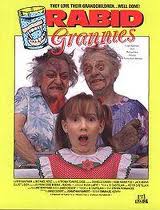Distribution Guru Jerome Courshon on Getting Your Film Distributed with and Without a Pedigree – The Secrets to Distribution Part 1
By Kaylene Peoples | July 5th, 2011 | Category: Film Distribution, Indie Hotspot | 1 Comment »Interview by Kaylene Peoples
Responses by Jerome Courshon
What would you say when pointing out that the distribution guidelines are some of the most difficult barriers independent filmmakers face when trying to get their film distributed?
One of the hardest things is the lack of knowledge and understanding. If a filmmaker wants a theatrical deal, here are the three steps that I need to take to actually get a theatrical deal. One of the biggest mistakes that I find (and I did this myself) is the scatter shot approach to distribution. A filmmaker finishes his/her film and now it’s time to get it out into the marketplace and they just start talking to friends and colleagues and go online to discussion boards and facebook and news groups or wherever. I don’t really know if people still use news groups. They then ask on these online communities, “Who do you know, where should I send my film, what do I do?” A lot of them know they should do film festivals, but they don’t know much more than that. Their friend might say, “I know so and so at HBO in New York (or some other company). Why don’t you send the film to them?” So, they’ll pack up their movie and send it off to HBO. The filmmaker, based on other recommendations, will probably end up sending the movie to at least three different markets (Cable, Theatrical, Home Video). It’s the scatter shot approach. They just want anything to happen with no real focus or targeted market. The scatter shot approach doesn’t work at all. It’s a dead approach.
In your opinion, what kind of movie has no chance of getting distributed? There are levels: high production values, low production values. There’s got to be a barometer somewhere for what can and cannot be distributed.
 There are layers to this answer. I’ll be frank. Given the years I’ve been in the industry, and what I’ve seen so many filmmakers do—very mediocre films and sometimes kind of bad films—I think almost any film, as long as it’s not a total piece of crap, has some shot at distribution. Now, they don’t all have a shot at theatrical, and they may not all have a shot at foreign sales or home video. But most films unless they’re so bad and so unwatchable . . . but here’s the caveat to that, sometimes those films can have a cult following and achieve distribution in a cult way. I don’t think that I would personally want to watch any movies that Troma [Films] picks up and distributes, but maybe I would. I don’t want to single out Troma, but any movie really has a shot. The question is how big of a shot and what kind of a shot.
There are layers to this answer. I’ll be frank. Given the years I’ve been in the industry, and what I’ve seen so many filmmakers do—very mediocre films and sometimes kind of bad films—I think almost any film, as long as it’s not a total piece of crap, has some shot at distribution. Now, they don’t all have a shot at theatrical, and they may not all have a shot at foreign sales or home video. But most films unless they’re so bad and so unwatchable . . . but here’s the caveat to that, sometimes those films can have a cult following and achieve distribution in a cult way. I don’t think that I would personally want to watch any movies that Troma [Films] picks up and distributes, but maybe I would. I don’t want to single out Troma, but any movie really has a shot. The question is how big of a shot and what kind of a shot.
For theatrical, if a movie has a name (known actor) it is already five steps ahead of anybody else when they’re finished. They’re easier to get into the distribution stream. Theatrical can still be challenging, depending on the name(s). Certainly with names, they can garner premier slots at various festivals. Movies without names need extra care and attention. If one wants a theatrical deal, one really has to be as objective as possible. “Does this film have a shot?” Here’s the dirty little secret in Hollywood. If your movie isn’t at Toronto, Sundance, or Cannes, if you want a theatrical deal, you better actually get a slot at one of those three festivals. Distributors and acquisitions execs really only go to those three festivals. Some will also attend Tribeca, Berlin, New York, but by and large if you’re not in one of those top three and a feeding frenzy from the distributors doesn’t break out, then you’re probably not going to get theatrical distribution. But, there is a caveat to that! And there’s a caveat to everything. If you have a movie that didn’t get into Sundance, Toronto, or Cannes, but you’re in other festivals, and you’re actually building what I call a pedigree (a profile on the film) and that is simply press. You can pull quotes from articles that you’re getting written about. You’re winning awards perhaps, certainly press and reviews, stuff that says this is a good movie. That’s what I call pedigree. When you can build a pedigree, now there are a number of distributors (not the top 20, like Focus Feature, Lionsgate, The Weinstein Co.). But there are a number of players in the theatrical game who would be interested in your film. They don’t involve themselves with the bidding wars, but once the dust settles, they see what they can get involved with in regards to their budget for picking up films. There are a number of those companies that while they don’t attend these other festivals, if they find out about a film with some pedigree, they might be interested. Now it’s not going to be a film that goes into 500-1000 theaters, but they might pick it up for L.A.; and if it does well, they might roll it out to Boston, San Francisco, and/or Chicago. They’ll platform it the way most of these specialty or smaller distributors do because they don’t have the P&A (print and advertising) funds that the bigger studios have.
Theatrical distribution is the hardest kind of distribution to obtain from a distributor. So the dirty little secret is if you’re not in one of those top three, you can probably forget about it. However, most people don’t realize that there are a number of films picked up not at those festivals, and usually after they’ve built some kind of pedigree.
 I’m one of those filmmakers that also did the scatter shot approach. I had someone initially shopping my movie. I was told there are certain films that can do o.k. in distribution without a star. I was told one of them was in the horror genre. Is that accurate or inaccurate?
I’m one of those filmmakers that also did the scatter shot approach. I had someone initially shopping my movie. I was told there are certain films that can do o.k. in distribution without a star. I was told one of them was in the horror genre. Is that accurate or inaccurate?
That is accurate. It is a myth that if you don’t have names in your film, you’re not going to get distribution. Every day we see movies that get distribution and they don’t have names in them. The genres that are the easiest to sell both domestically and internationally are the genre films. A drama without names is a hard sell overseas. A comedy is tricky because American humor is different than German humor, Russian humor, or humor in other countries. Comedies are hit and miss. It depends. In some countries the buyer may like or not like, find it funny or not. But genre films, like mafia or horror, thriller, science fiction, supernatural, anything with violence and blood and sex that transcends language. Even though those films get dubbed in the territorial language of the country that it’s sold to, it’s almost like it transcends language barriers way better than drama and comedy does. Domestically in the U.S. and Canada, genre always sells. That’s why it’s the bread and butter of the industry. It’s engaging. There’s built-in dramatic conflict within all those stories, and that is what most people like to watch.
In the domestic market, if it’s a non-genre film like romance and comedies, if they don’t have names in them, then you absolutely have to do film festivals. The genre films can get picked up without film festivals or even a pedigree.
—-
This interview with distribution expert Jerome Courshon serves as the first part of the 4-part series on distribution for independent filmmakers based on the information in the distribution kit, which costs $600.00. The kit contains nine DVDs and accompanying books. Jerome has been so kind to share his secrets, and he will be offering a 20% discount to filmmakers who would like to purchase the kit through Agenda Magazine. To learn more about “The Secrets to Distribution,” visit www.distribution.la.









[…] Read the article. […]